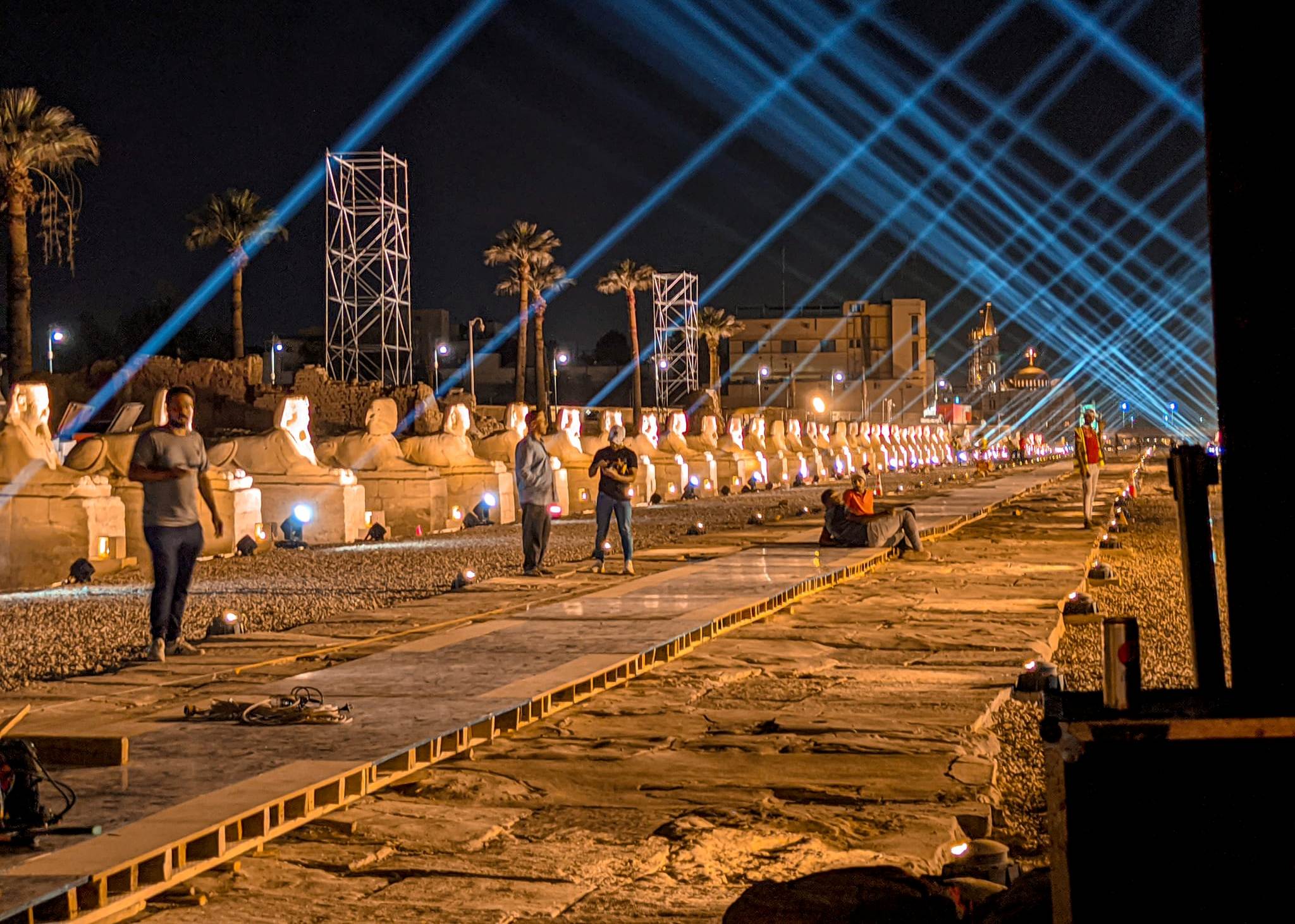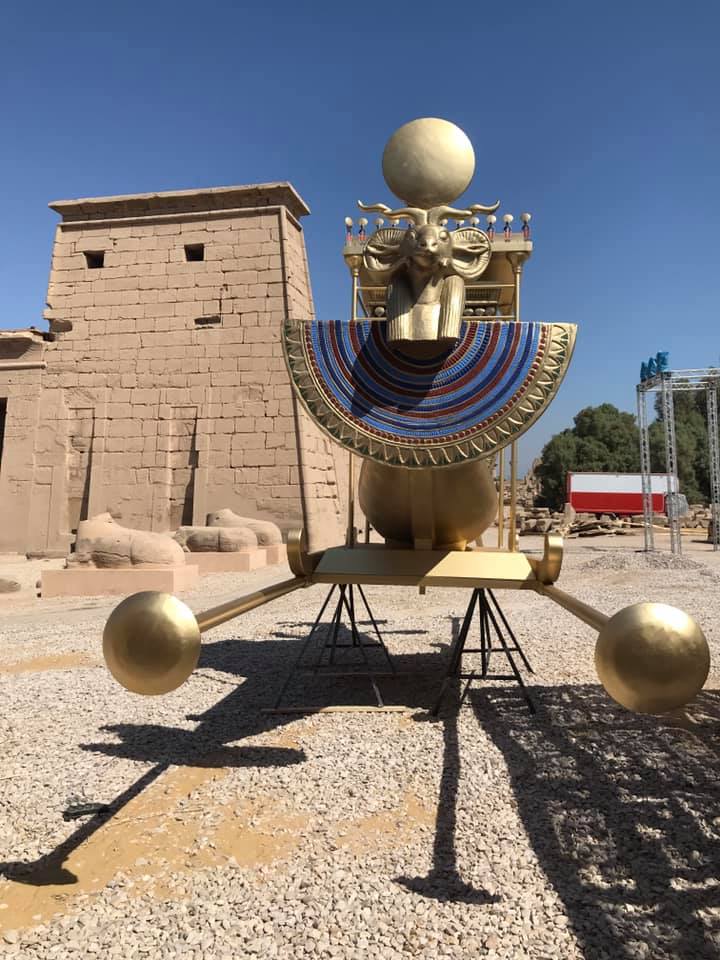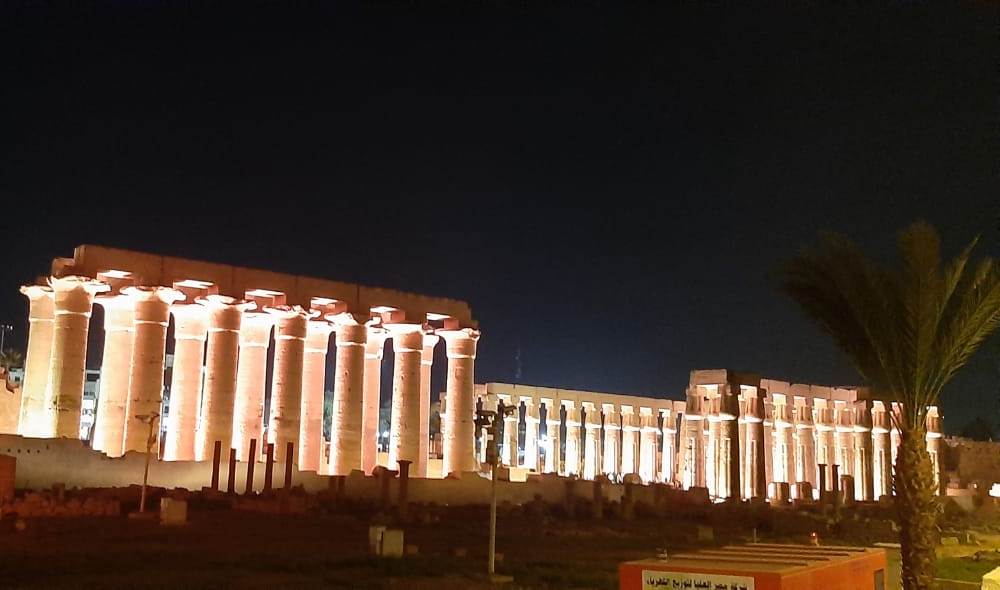The Pharaonic Avenue of Sphinxes (Rams Road) was a road of major processions for the kings of the Pharaohs, and various holidays were celebrated inside it, including the renowned "Opet Festival” and the coronation feast of the king.
It connects the Karnak Temple in the north with the Luxor Temple in the south, bringing the total lengths of the road to 2,700 meters, with nearly 1,200 statues on both sides.
The weight of each of the statues with rams heads or man heads ranges between 5 and 7 tons with a length that reaches 3.7 meters.
Each of the statues represent a lion’s body with a ram’s head and they embrace the statue of Ramses II, the symbol of protection.

The shape of the ram expresses the Pharaonic god Amun, whose restoration work was completed by Egyptian hands, along with a number of workers specialized in lifting stones. The original colors of the statues of rams were restored.
The road is divided into 3 main parts; the first starts from the tenth edifice of Karnak Temple and heads south for a distance of 300 meters until the gate of the Temple of Mut.
This part of the road was built in the era of King Tutankhamun, and it is considered the oldest part of the road visible so far.
In the road, you can see sphinxes with a lion's body and a ram's head, sitting on bases.

The second part of the road includes statues of whole rams in front of the Temple of Khonsu, one of the Karnak temples. It dates back to the era of Amenhotep III, who started the construction of the Luxor Temple. They were brought to this place during the reign of King Herihor, one of the kings of Dynasty 21.
The third part of the road extends from the Temple of Mut first towards the west or towards the Nile for a distance of about 200 meters and then deviates south at a distance of 2000 meters until it reaches the Luxor Temple.
The statues in this part are smaller than in the previous two parts, and take the form of a lion's body and a human head bearing the features of King Nectanebo I.

Comments
Leave a Comment